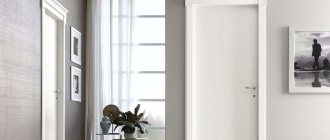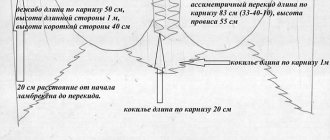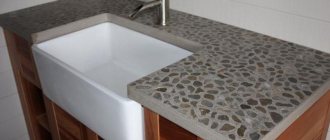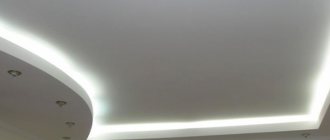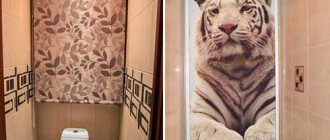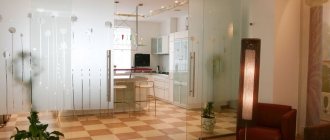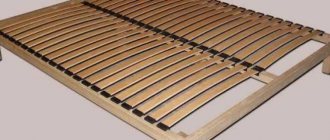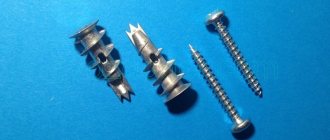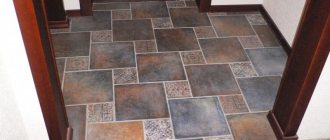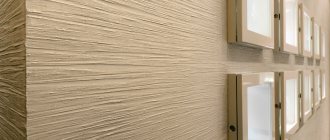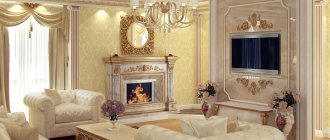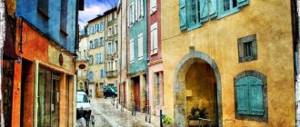With the help of varnishes you can create reliable protection for wooden coverings, and they also give the products an attractive and very colorful look. They contain many different substances that protect the surface from the negative effects of acids and alkalis. They also prevent mold and fungi from developing on wooden surfaces.
Varnishes are widely used for various surfaces, but most often they are used to coat wooden surfaces.
Today, alkyd varnish is considered one of the most popular and affordable mixtures. The product has high performance and is excellent for wood.
Peculiarities
After final hardening, alkyd mixtures turn into a coating with a glossy sheen.
The material, which is coated with a layer of such varnish, will be reliably protected from absolutely any irritants. The operation of alkyd mixtures is very simple - the alkyd-based varnish is quite thick, spreads well over the surface and creates a dense film. The film can be matte or glossy.
Often these compounds are most often used for finishing wood products. It could be pine, spruce, oak. Floors are also often coated with these compounds. Most of those who buy them use them to treat wooden or parquet floors.
Compound
The product necessarily contains alkyd resin as a base. It is most often extracted from natural materials - flax oil or wood. The second most important component is organic solvents. Various fatty acids can also be found in the composition.
When alkyd wood varnish is absorbed into the porous structure, penetration is increased thanks to these solvents. The product is absorbed quite deeply and can successfully highlight the beauty of the wood.
Thanks to these features, alkyd compounds are widely used in finishing work inside and outside. Parquet varnishes allow you to change the appearance of floors almost beyond recognition. With the help of such mixtures it is possible to obtain deeper colors of all shades, thereby emphasizing the special texture of the parquet.
Specialized household varnishes
Along with classic wood varnishes, special-purpose compositions are increasingly being used.
Bitumen varnish
Composition and application: Produced on the basis of petroleum bitumen, resins, antiseptics, corrosion inhibitors and organic solvents. It is an unsurpassed anti-corrosion and protective agent for any surface. Often used as a waterproofing impregnation and primer-adhesive for bitumen roofing materials.
Features and safety measures: It is flammable and quite toxic, so all work must be carried out only in the open air or in well-ventilated areas. Since bitumen varnish is a very sticky substance, additional protection is needed for exposed skin.
Varnish on stone and brick
Composition and application: Produced on the basis of acrylic copolymers, synthetic resins with the addition of plasticizers and organic solvents. Suitable for varnishing natural and artificial stone, plastered surfaces, concrete and brick. At the same time it serves as a water repellent, protecting surfaces from mold and mildew. Gives a “wet stone effect”.
Features and safety measures: Reduces delamination of surfaces, clogs pores in concrete and stone, reducing dust formation. It is recommended to use a respirator when applying.
Characteristics of alkyd compositions
These compounds have no competitors in terms of resistance to sudden temperature changes.
Also, such a tree is not affected by changes in humidity levels. The coating based on these varnishes is not afraid of various vibration loads.
The substance completely lacks the adhesive properties inherent in other paint and varnish products. Once the mixture is applied, the product will begin to soak into the wood rather than into the cracks in the floor. This property allows you to forget about creaking floorboards and various noises - this is what water-soluble varnishes suffer from.
Flaws
Speaking about the advantages, we should not forget about the disadvantages that alkyd varnish has. Reviews of disadvantages are mainly due to the long drying process. On average it takes more than a day. That is why immediately after applying the layer you need to open the windows. Reviews say that this will significantly speed up the process.
Another disadvantage is wrinkling if during the application process the master applied too thick a layer.
An ideal coating will be obtained if no more than 120 g of product is used per 1 m2.
As for wear resistance, it is low for wooden coatings. In addition, the service life of a coating based on alkyd varnish is only 2-3 years. Therefore, most often it is used not for the floor, but for working on furniture or walls.
What is acrylic
Modern chemistry has given us many wonderful materials. The simplest acid, containing carbon as a base and called acrylic, is a colorless liquid with a pungent odor. The main component for producing acrylic is the well-known natural gas. Due to the properties of high-speed polymerization, solubility in water and the formation of a stable film upon entering into a chemical reaction, the acid has become important in the production of a number of polymers. This is how an acrylic suspension was born, on the basis of which acrylic varnishes began to be produced.
They have many advantages over their predecessors:
- Since the solvent is ordinary water, the varnish does not contain harmful highly volatile compounds.
- After application to the surface it dries quickly.
- The resulting film is resistant to cracking.
- It is not destroyed by exposure to ultraviolet radiation.
- Hygroscopic.
- Chemically neutral.
- Most importantly, the varnish has a low price.
Latest production technologies
Urethane-alkyd varnish has become very popular throughout the world paint and varnish market. This is a modified composition that has higher performance characteristics. The manufacturing technology is based on the synthesis process of uralkids. During the synthesis process, the components are bonded with special polyurethanes.
The effect of this modification is very high. Thanks to polyurethanes, it was possible to significantly reduce drying time.
Now it is 12 hours. The price of these products is practically no different from the cost of the most common alkyd analogues.
Popular brands
One of the very first alkyd-based compositions produced in Russia was alkyd varnish PF-231. This product works great on all types of surfaces. The film of this product has a fairly neat appearance. This is the main advantage of this brand. But this product also has disadvantages. This is not a hard enough coating that simply physically cannot last more than 2-3 years on wooden floors. On any other surfaces, the shelf life of the coating is much longer.
MCh-0163 is a two-component composition based on parquet varnish and a special acid hardener. If we compare this product with PF-231, then it has much better characteristics. Among the features and advantages are higher resistance to moisture and abrasion resistance. Among the disadvantages is weak exposure to direct sunlight, as a result of which the surface darkens. Also, the film does not have sufficient elasticity. The smell is very pungent.
EP-2146 is a one-component alkyd varnish with higher characteristics than other brands. The modifying component here is epoxy resin. This brand is distinguished by high characteristics of hardness, moisture resistance, and resistance to abrasive action. Among the possible areas of application is alkyd parquet varnish. The product can also be used to finish various wood materials.
Types of varnishes for wood
Perhaps for many, choosing a varnish for wood can cause some difficulties, because not everyone knows what types of these mixtures exist and what they are intended for. Currently, many construction stores provide a large number of these mixtures, which have distinctive features.
Oil varnishes
This type of product appeared relatively long ago; at first they were based on solutions of natural resins. But gradually the composition of these mixtures improved; other artificial components began to be added to it, which improve not only the appearance after application, but also ensure a long service life.
In modern oil mixtures, artificial resins with modified natural oils are added, and additional solvents and driers are added.
Important! Due to the fact that artificial substitutes began to be used in the production of these mixtures, this made it possible to significantly reduce costs and, as a result, made the cost of all wood varnishes generally available and quite acceptable.
As soon as the varnish with an oil structure is applied to a wooden surface, it acquires the structure of a durable film, which becomes yellowish in color. Typically, these products are used to treat flooring and interior decoration.
Alkyd
Alkyd products have improved quality characteristics. These mixtures dry quickly and, after application, form a durable coating that can retain its original appearance for a long time.
General characteristics of alkyd varnishes:
- Can be applied to any type of wood. Completely cover all damage and defects;
- Give wood shine, a natural appearance, a yellowish or brown tint;
- They have increased moisture resistance, as well as resistance to temperature changes;
- Just like stain, alkyd mixture dries quickly. The period of complete drying is about 48 hours;
- The service life of the floor covering is approximately 3 years.
Alcohol varnishes and polishes
Alcohol varnishes and polishes are of high quality. After applying these products to the surface of the wood, they give it strength and increased shine. But still, before purchasing these products, you must carefully consider all their qualities:
- These coatings are fairly easy to polish, but have a low degree of protection against moisture;
- The composition includes ethyl alcohol in which the resin is dissolved;
- They are not very expensive, but are produced in small quantities;
- The drying period is fast - from 20 minutes to 1 hour;
- Used for painting wooden surfaces of musical instruments.
Alkyd-urea type
These products are based on a solution of alkyd and amino-formaldehyde resins. These mixtures are used for painting wooden floors and other products.
Important! It is worth paying attention to one quality of these products - varnishes can harden in air at the required temperature conditions only after adding hardening mixtures to the composition. It is recommended to add these products to the composition immediately before use.
Once a hardener is added to these products, they have a limited period of use. Typically, the period of application ranges from 3-4 hours to 1-2 days, it all depends on the properties of the varnish. After application to the surface, they take on the appearance of a dense film coating that has an increased degree of strength.
Nitrocellulose
The composition of this varnish is made by mixing cellulose nitrate in a mixture of various solvents with an organic structure. To adjust the composition, special resins are added to it.
This product, after application, forms a film with an increased degree of hardness and strength. After drying, the film becomes transparent and has virtually no tint. This mixture can be applied to various wooden products that are installed indoors.
Polyester type
This coating contains an increased number of components that provide its strength properties. This mixture has the following features:
- When applying, maximum precision is required;
- After complete drying, the coating does not shrink during the subsequent period;
- They take on the appearance of a thick film on the surface, which has increased resistance to various negative influences.
Acrylic
Acrylic varnish, like stain, has increased safety. It's all about its composition, which contains only organic components. These mixtures do not emit toxic substances, so they are often used in children's rooms.
Polyurethane
Mixtures of this type have an increased degree of strength and wear resistance. They are used for treating floors in the halls of palaces, museums, and also for musical instruments. Before using it, it is recommended to carefully study its properties and instructions for use. It has an increased cost, but it is fully justified by its qualities.
Before deciding which coating will be used to paint the wood - varnish or stain, it is worth carefully considering all the characteristics of these mixtures. To create a good and durable coating, it is worth using expensive products, because they have good qualities and a long service life. In addition, it is worth paying attention to the conditions of use of these products - humidity level, temperature, load.
The effect of alkyd varnishes
In order to obtain the highest quality surface, it is necessary to apply the composition in several layers. More often - at 2-3. In this case, each layer is laid only after the previous one has completely dried. The consumption should be approximately 75 grams per 1 m2. The use of such paint and varnish products in a higher volume will not provide surface quality - the strength and hardening time will decrease.
White spirit is used as a solvent for these varnishes. After the composition is applied to the surface, the solvent will immediately begin to evaporate. When all the white spirit has evaporated, polymerization processes are activated. This reaction occurs through the nature of the chemical bonds in the resin molecules.
At first, the consistency of the film will resemble something like glue.
Then, after 9-12 hours at room temperature and humidity, the surface will begin to harden. The thickness may decrease slightly during the hardening process. This depends on how much of the solvent has evaporated. Each varnish may not contain the same amount of solvent. Products containing less white spirit have low toxicity.
How to dilute and drying time
Since alkyd varnish contains organic substances, it is recommended to dilute it with white spirit in a 1:1 ratio.
Exceeding the amount of solvent will lead to loss of quality characteristics of the paintwork material. The manufacturer prescribes recommendations for diluting varnish products. Important! It is not recommended to dilute yacht varnish due to its special composition, if the proportions are violated, performance qualities are lost.
The drying time depends on the type of product used. For most alkyd mixtures, this period is 1-2 days.
How to choose
It is important to clearly define how the room where the varnish coating will be applied will be used in the future.
Provided that the varnish is applied to the floor, it is important how many people will be in the room at all times. For heavy loads, it is better not to choose alkyd varnishes, but to purchase something water-based.
Alkyd compounds are best suited for those surfaces that will not be subject to abrasive or mechanical impact. Then the surface can last much longer. These products are not suitable for floors in the kitchen and hallway.
Pros and cons of acrylic varnish
Before purchasing, it is advisable to familiarize yourself in more detail with the qualities and methods of use. Acrylic varnish for interior work has a lot of positive characteristics:
- Good adhesion to almost any cleaned surface.
- The resulting coating is elastic and can protect against accidental scratches or other mechanical damage.
- Environmental Safety.
- No foreign odors.
- Thermal stability.
- After drying, the film becomes water resistant.
- The protective layer of acrylic varnish does not change color in the sun.
- Dries quickly.
- You do not need to purchase expensive equipment to work.
- Colorless glossy acrylic varnish does not cover the natural texture.
- Improves the aesthetic appearance of the treated surface.
- Good resistance to pathogenic organisms.
Disadvantages of acrylic varnish:
- Storage at low temperatures leads to deterioration of basic qualities.
- During the cold period, drying time doubles.
- Relatively high cost.
